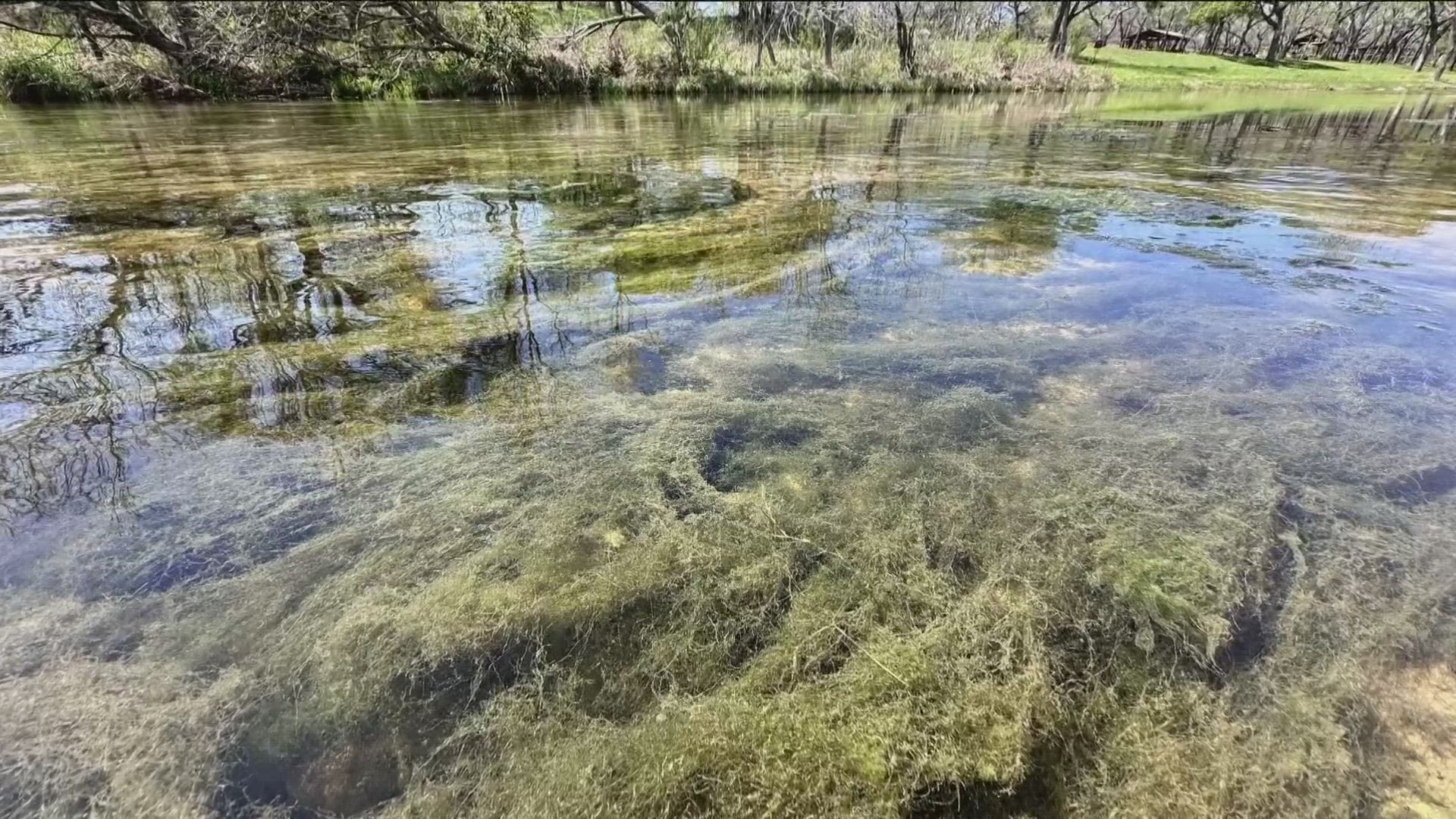GEORGETOWN, Texas — The Texas Commission on Environmental Quality (TCEQ) is expected to weigh in on a legal battle between some Williamson County homeowners and the city of Liberty Hill on Thursday.
The years-long dispute involves the city's wastewater treatment plant and how much phosphorus from treated wastewater it can discharge into the South San Gabriel River. That phosphorus leads to rapid algae growth, which residents say violates Texas water quality standards.
The KVUE Defenders have been following this issue since it started in 2018. The year before, Dave Bunnell and his wife moved next to the South San Gabriel River.
"We moved here because we have three daughters and seven grandkids and they were all in this area," Bunnell said. "So we wanted to be close to them and have a place where the family could meet and hang out."
That place is Gabriel's Overlook, a small community off Highway 29 and Ronald Reagan in Georgetown, where the South San Gabriel River flows behind Bunnell's backyard.
For months, he fished and enjoyed the waterway with his grandchildren. Bunnell shared a video of the river when it was so clear, you could see the limestone at the bottom.
That changed in April 2018 when thick globs of algae began blanketing the river.
"You couldn't even walk in the river. You couldn't see the water," Bunnell said. "It was 100% algae at that point in time."
Bunnell discovered the culprit was 2.5 miles upstream, where the Liberty Hill Wastewater Treatment Plant discharges treated wastewater into the river. The excessive algae growth was the result of the facility releasing phosphorus into the water.
Bunnell and others filed a complaint with TCEQ, triggering a yearslong legal battle. They want the treatment plant to limit the amount of phosphorous, saying that level violates state water quality standards by preventing recreational use of the river, like fishing and swimming.
"We've been having algae growth ever since this outfall started flowing," Drew Engelke, who lives next to the discharge site, said. "The algae, when it gets warm, has a terrible smell. Because it grows, then it dies and it becomes fetid. It's a jungle smell ... It also attracts flies. There's an invasive snail that has come into it and started living in the algae."
An up-close look at where the Liberty Hill Wastewater Treatment Plant discharges its wastewater into the San Gabriel River showed lots of algae growth.
The multi-year legal battle also involves Liberty Hill's request to renew its wastewater discharge permit. The latest in that fight came in November when judges with the State Office of Administrative Hearings sided with residents and said the wastewater treatment plant needs to reduce the level of phosphorous in its treated wastewater from 0.15 milligrams per liter to 0.015 milligrams per liter.
But Liberty Hill Interim Mayor Crystal Mancilla disagrees with that assessment, saying the city has already taken several steps to address the issue.
"The council and staff have done everything that they can to meet the standards that TCEQ requires and also be lower than what's required to do the best that we can for our citizens," Mancilla said.
Natasha Martin, who represents the city, said the administrative judges' recommendation to decrease the phosphorous level is just unattainable.
"If you have 0.015, you really need to be able to operate at 0.01 or 0.009, because you have good days and bad days," Martin said. "You're going to fluctuate. And a limit [of] 0.015 does not technically allow that ... You can't do it. This is a statewide concern because how the plants are built now, they can't reach it."
Martin also said cities across Texas are watching this case closely. Earlier in March, the Texas Municipal League wrote a letter stating, "The limitation set in this case holds significance for other cities across the state." The Texas Rural Water Association also wrote a letter asking TCEQ commissioners "to reject the [total] phosphorous [effluent] limit proposed by the State Office of Administrative Hearings."
The South San Gabriel River was once considered one of the 22 pristine rivers in Texas. It's a title given to rivers and streams that contain below detectable levels of phosphorous at 0.06 milligrams per liter.
Whether the river regains that title could now be in the hands of TCEQ commissioners.
KVUE asked TCEQ for the total number of complaints and violations cited against the Liberty Hill Wastewater Treatment Plant for the past five years. As of Wednesday, we have not received that information.
The KVUE Defenders have previously reported the facility violated the allowable chemical nutrient levels it can release into the river 3,108 times between November 2015 and November 2020, according to a legal notice filed by a resident. It also cited that the plant exceeded phosphorous limits by at least 994 days between November 2015 and July 2020.
In 2019, the TCEQ released findings on the Liberty Hill Wastewater Treatment Plant and found that the plant released approximately 3,000 gallons of treated wastewater, that included solid waste, on March 16 and 17.
The TCEQ cited the plant for six violations in 2018, and the plant has self-reported dozens of other violations since 2017.

